Botox is well-known in the cosmetic industry, but at the same time, there is a lot of misunderstanding about what Botox can do. Patients have inquired whether it can be used as an alternative to surgery, or whether it can completely remove deep lines. I’ll explain what a botulinum toxin can do for your appearance, and how I use it in my practice.
As an oculoplastic surgeon, my specialty was amongst the first doctors to use Botox for issues like facial muscle spasms, so I’ve been treating patients with botulinum toxin since 1993. Botox’s popularity skyrocketed after it was approved by the FDA for cosmetic use in 2002.
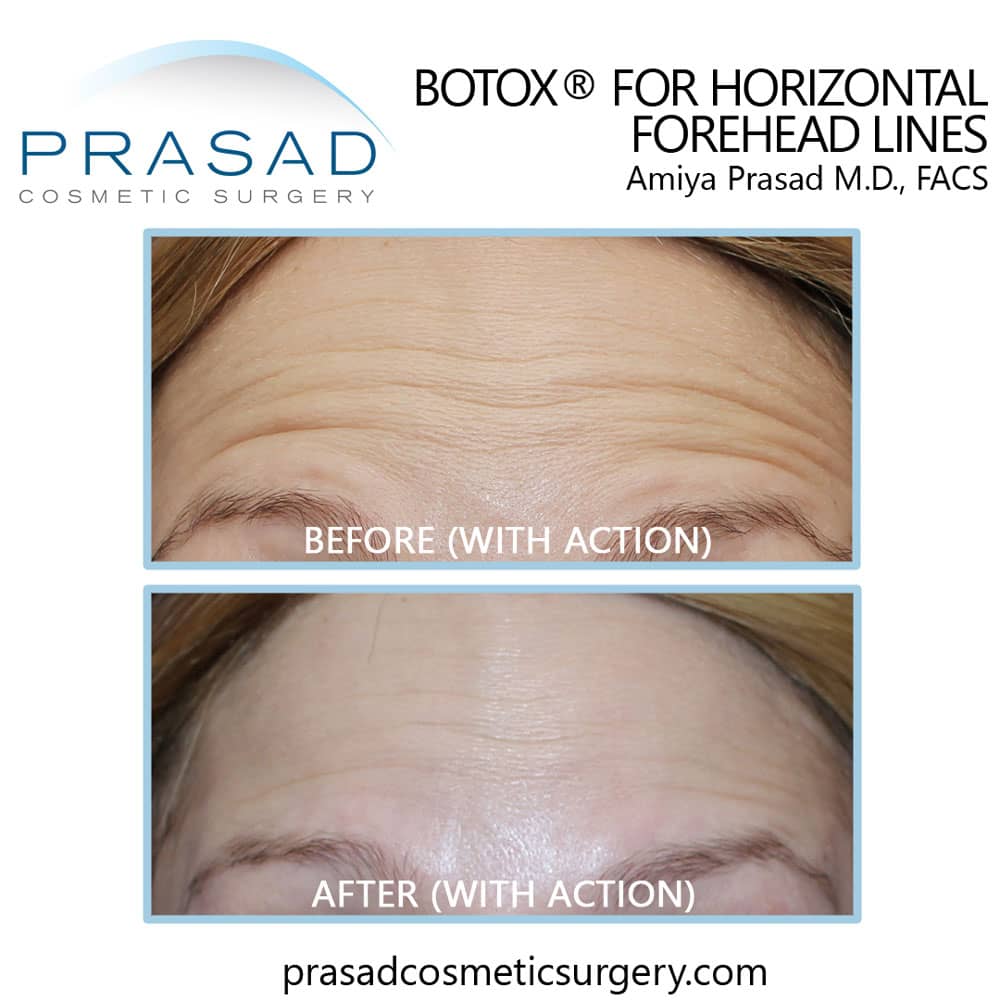
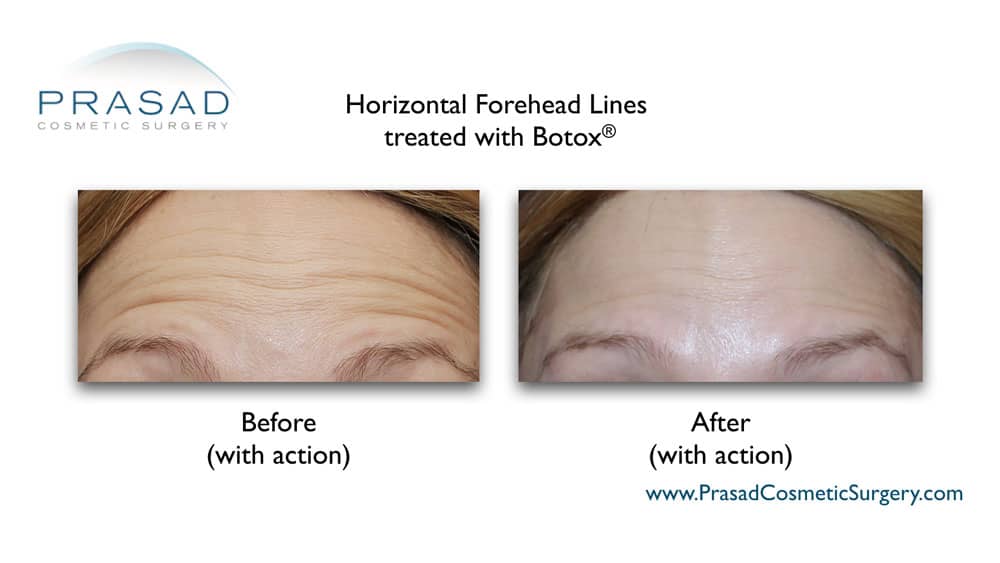
What is Botox?
Botox and other botulinum toxin brands such as Dysport, Xeomin, and Jeuveau – are all neurotoxins with different chemical structures that fall under the botulinum toxin category. When a neurotoxin such as botulinum toxin is injected into muscles, it temporarily inhibits or limits muscle movement by blocking signals from nerves to the muscle.
How Long Does Botox Take to Work?
Botulinum toxin takes about 3 days to take effect, with peak effects seen in about 2 weeks.
How Long Does Botox Last?
The effects can last for 3-6 months. It’s important to understand that what is injected is a liquid that affects muscle movement.
Botox vs Fillers
Fillers are not a neurotoxin, but rather are a gel used to enhance volume wherever they’re placed. Hyaluronic acid fillers have the distinct advantage of being soluble with the enzyme called hyaluronidase if necessary.
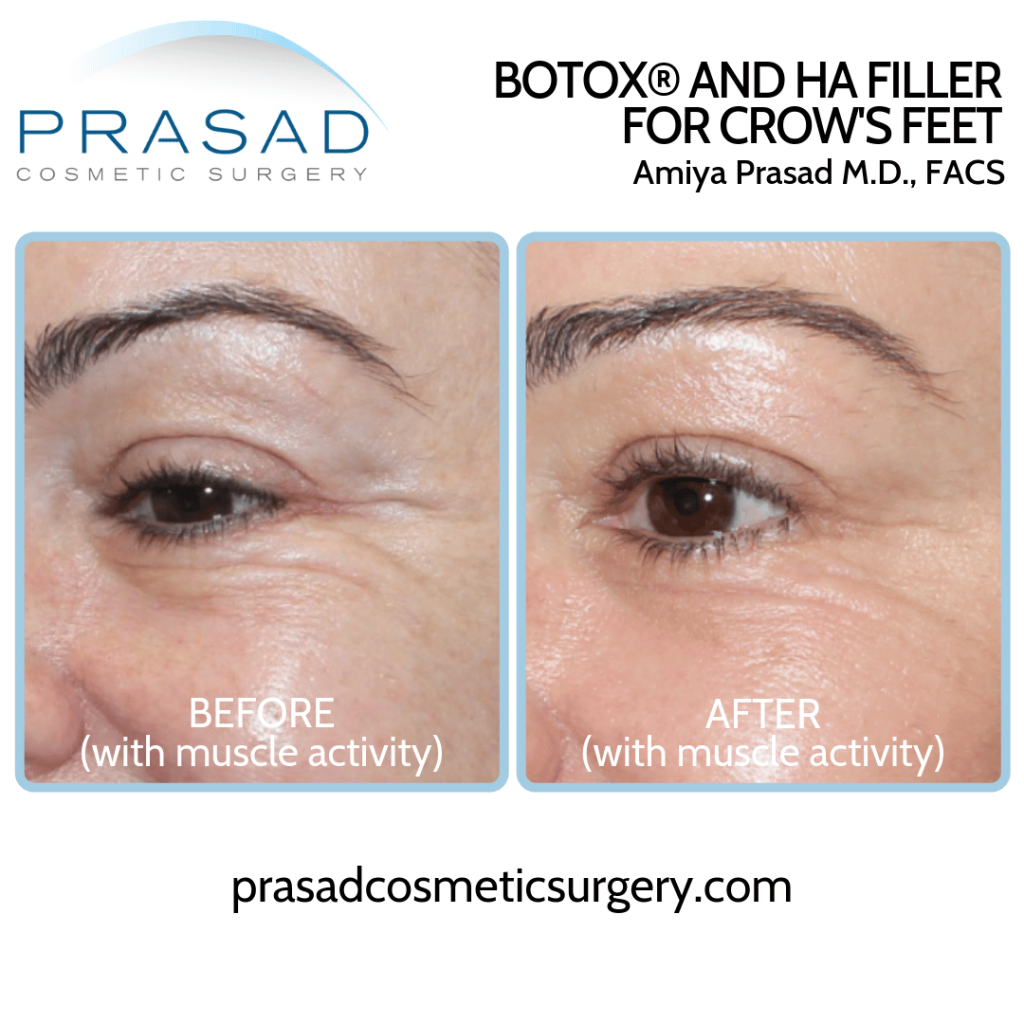

Botox Results
Botox for Crow’s Feet
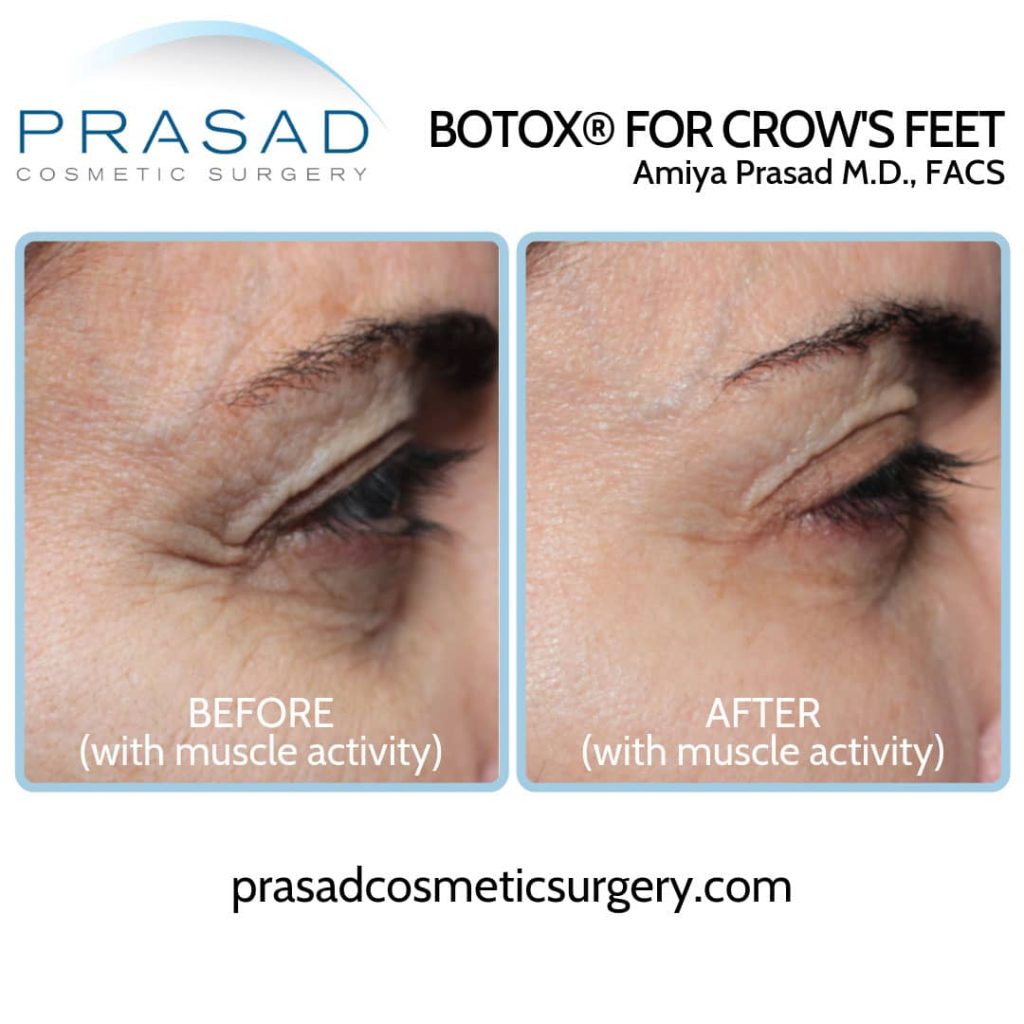
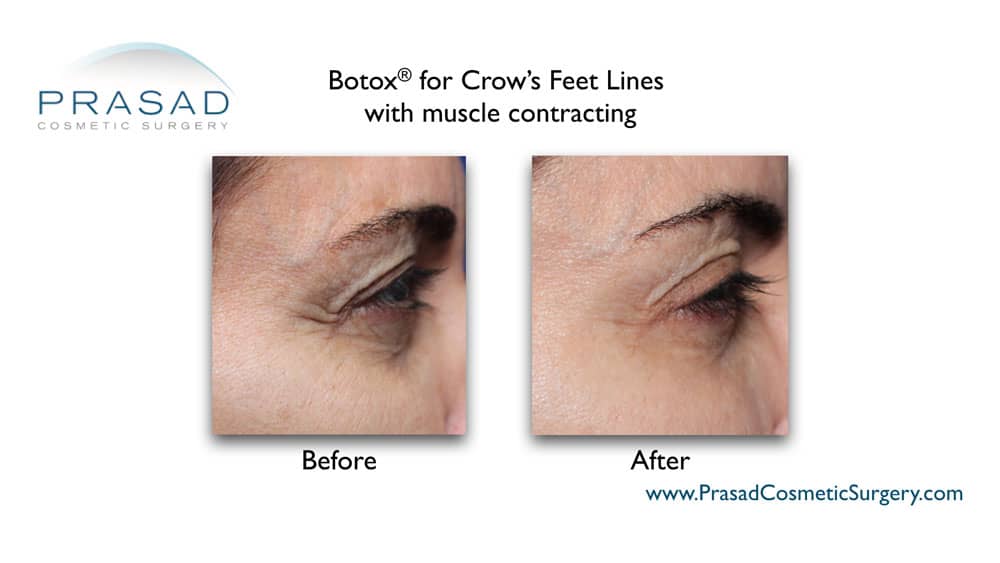
Since the eyes are so important to your appearance, my patients frequently inquire about crow’s feet lines, wrinkles, and discolorations that persist after botulinum toxin treatment. This is due to the fact that wrinkles and discolorations are caused by deficiencies in skin quality caused by factors such as aging, sun exposure, and smoking.
My approach to these issues is to tailor a strategy to improve the skin’s backbone known as the dermis, as well as the skin’s surface known as the epidermis. For example, I use platelet-rich plasma, or PRP, which is derived from your own blood that contains healing and growth factors that stimulate collagen production, and improve blood supply to your skin. I resurface the skin with various lasers to refresh the epidermis, as well as radiofrequency technology to help tighten the skin.
Botox for 11 Lines
Another area where deep lines can be improved by reducing muscle activity is between the eyes and on the top of the nose. These lines are often called “number 11s” due to their appearance, and are also known as frown lines or, in medical terms glabellar lines. These lines have a particularly strong influence on how people perceive you. People with deep glabellar lines frequently appear to be upset or angry. Botulinum toxin injections into the procerus and corrugator muscles reduce muscle activity, making these vertical creases less visible.

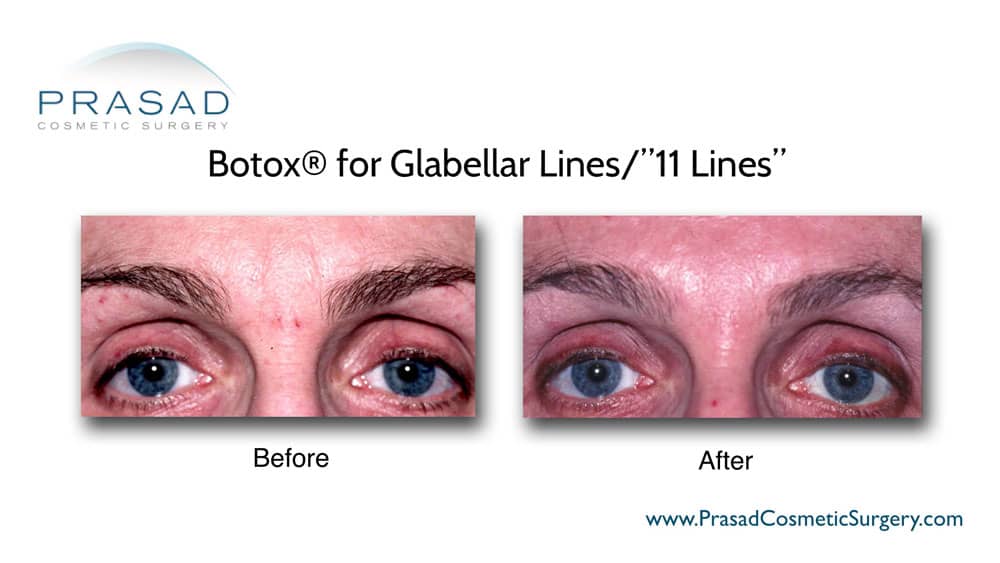
Botox for Forehead Wrinkles
Horizontal forehead lines can also develop as a result of repeated use of the frontalis muscle, which raises the brows, and frequently accompany glabellar or frown lines. The corrugator and procerus muscles move the brows in and downwards, while the frontalis muscle lifts them. Since these are opposing muscles, the key to achieving a satisfactory result is to reduce horizontal forehead lines, while keeping the brows from drooping too far downwards.
Botox Before and After Forehead


The Botox Brow Lift
In addition to reducing muscle activity lines, botulinum toxin can be used to enhance different areas of the face by balancing muscle activity and muscle relaxation. For example, I use botulinum toxin in a non-surgical brow lift procedure. I accomplish this by relaxing the muscles that pull the brow downward, known as brow depressors, which include the corrugator, procerus, and orbicularis oculi muscles. By relaxing the brow depressor muscles that pull down the brows with botulinum toxin, the frontalis muscle which lifts the brows in the forehead works unopposed, raising the brows.
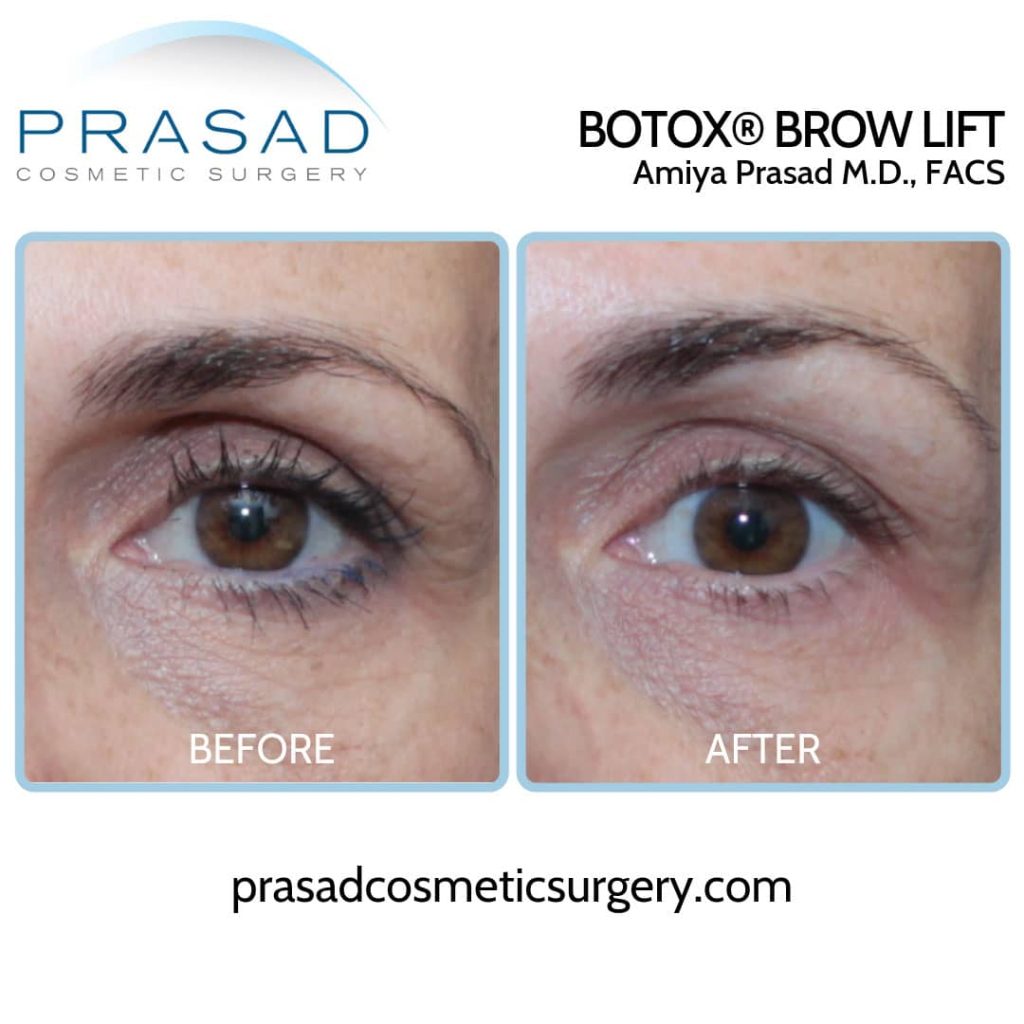
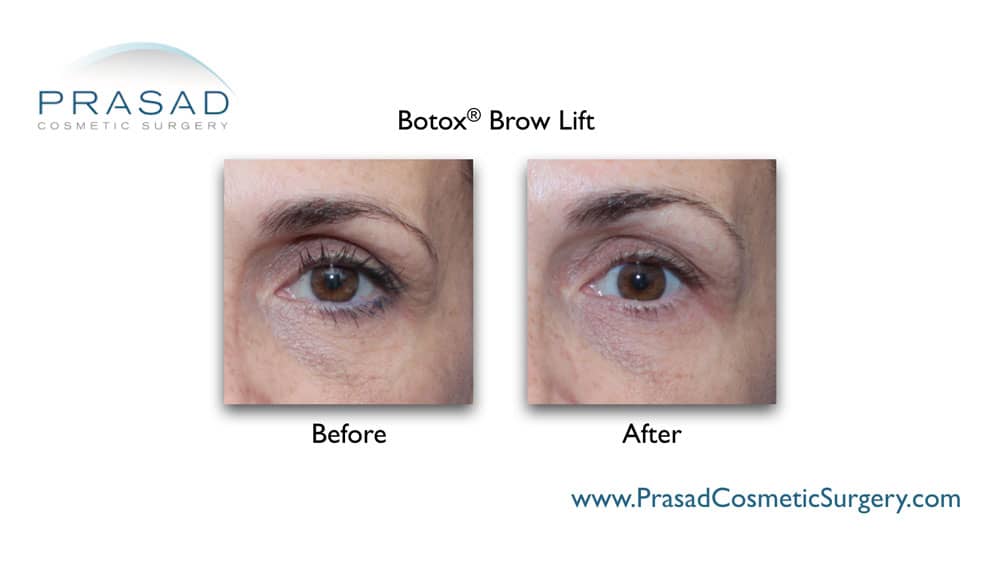
Botox for Vertical Lip Lines
Botulinum toxin can be used to improve the appearance of the lips and mouth. Vertical lip lines above the upper lip, also known as smokers lines, are caused by the activity of the orbicularis oris muscle, which is engaged when puckering, kissing, or drinking from a straw. When the lips are puckered, the depth and appearance of vertical lip lines can be improved by using botulinum toxin to limit the activity of the orbicularis oris muscle.
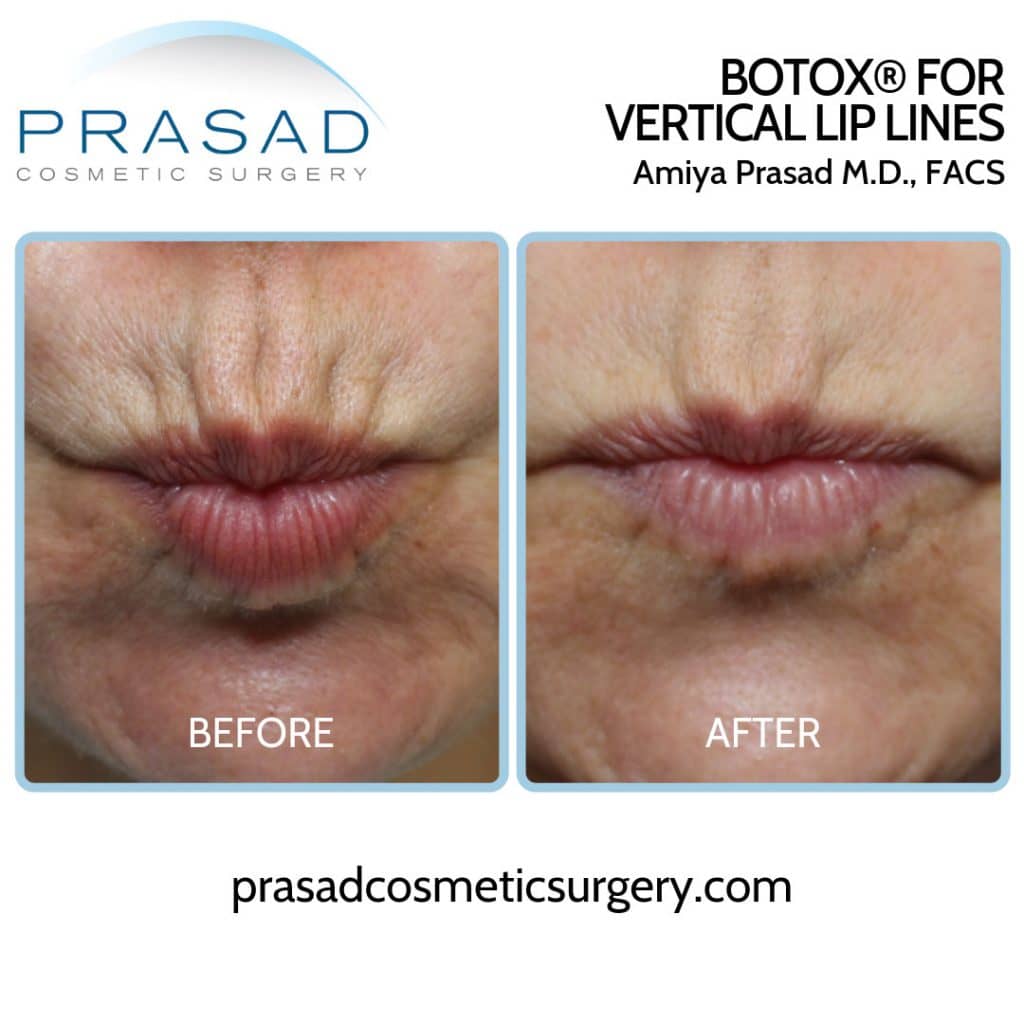
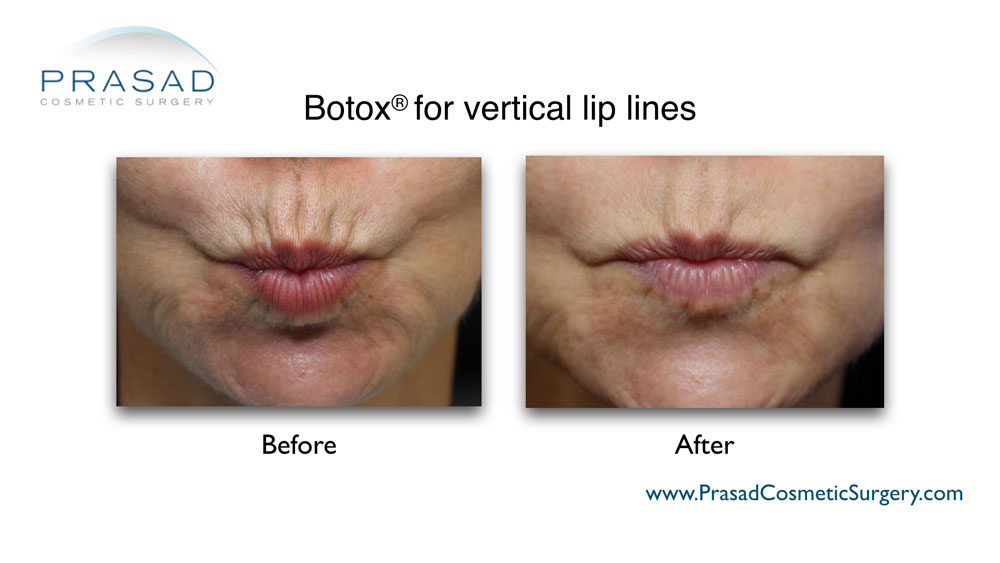
Botox Lip Flip
Lip Flip Before and After
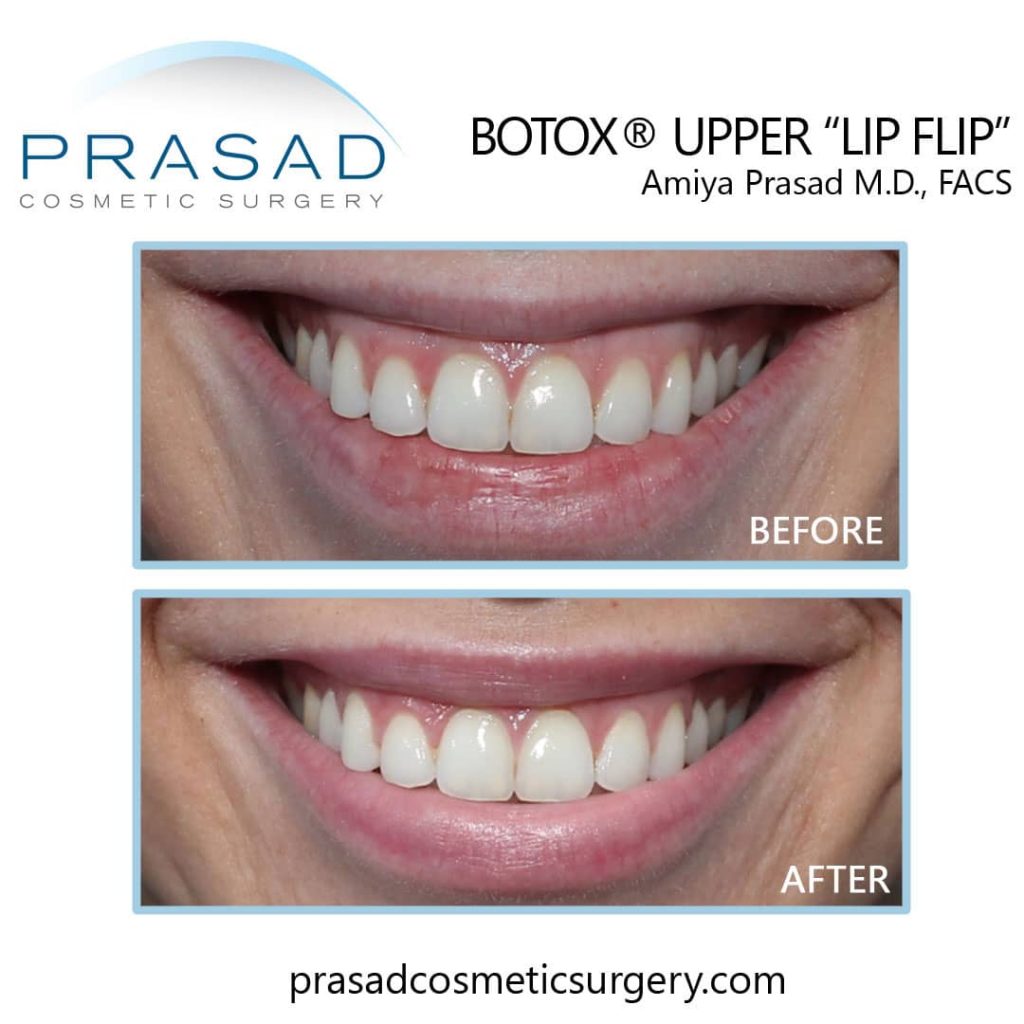
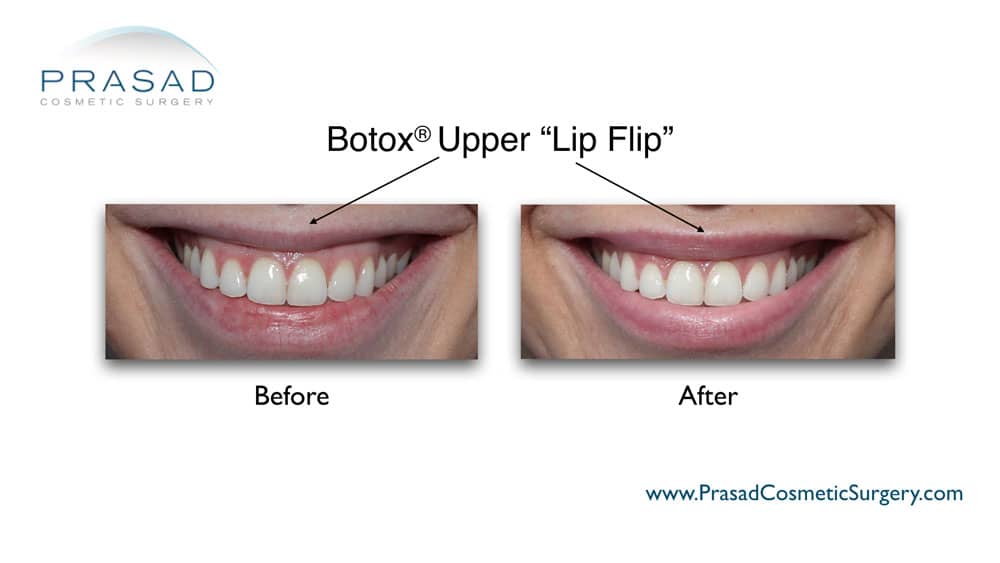
Botox for Gummy Smile
Some people believe that when they smile, too much of their gums are visible, often called a “gummy smile”. This could be due to overactivity of the muscles that lift the lips. I use botulinum toxin to treat the muscles that lift the lips, the levator labii and levator labii superioris alaeque nasi, so the lips don’t lift as much when smiling, exposing the gums.
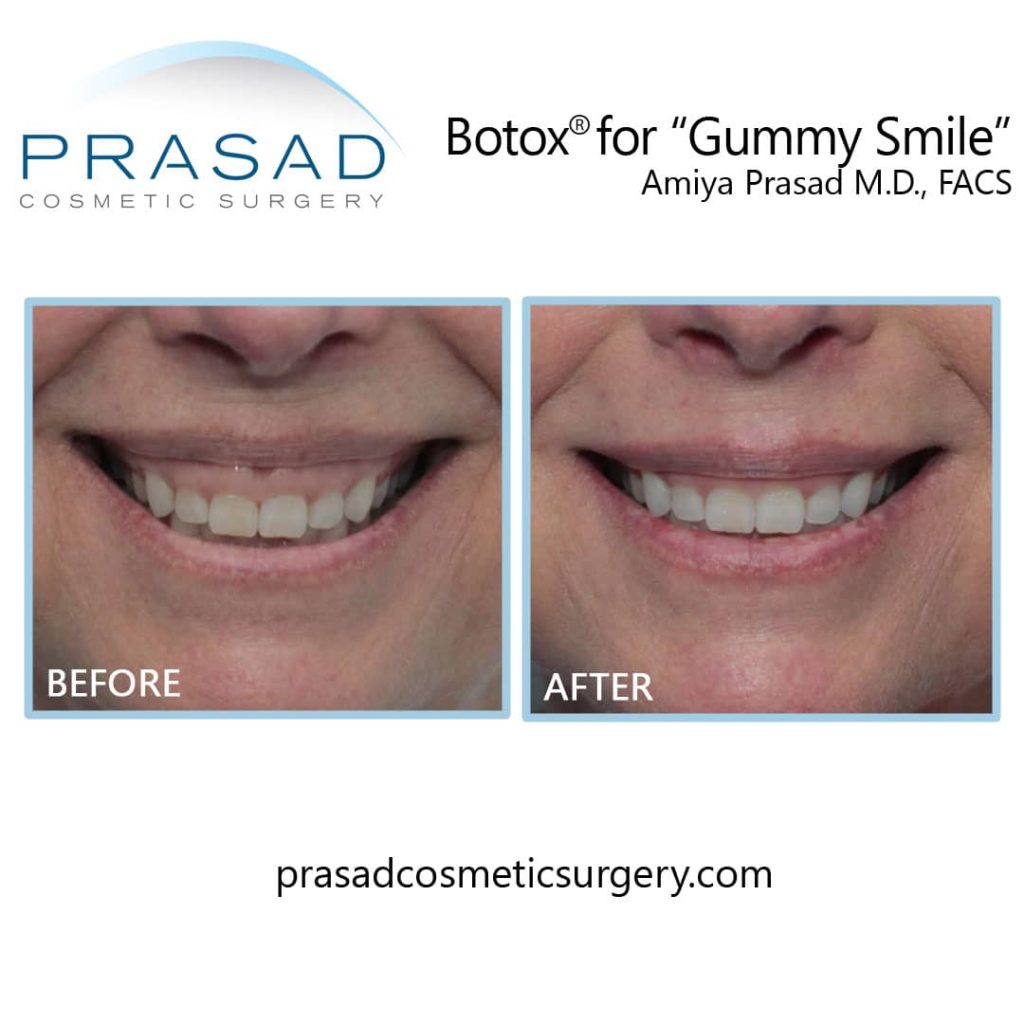
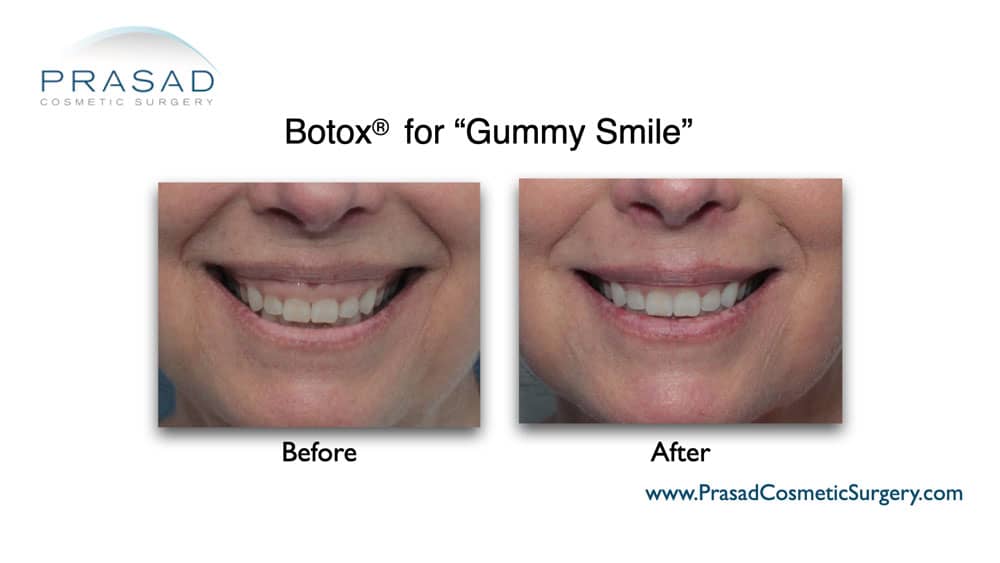
Masseter Botox
A facial imbalance caused by jaw widening is associated with thickening of the masseter muscle. The masseter muscle controls chewing and jaw movement. Teeth clenching frequently results in an enlarged masseter muscle. I inject Botulinum toxin into the masseter muscle to reduce muscle activity, which contributes to masseter muscle enlargement. With consistent treatment, muscle size decreases, and facial balance improves.
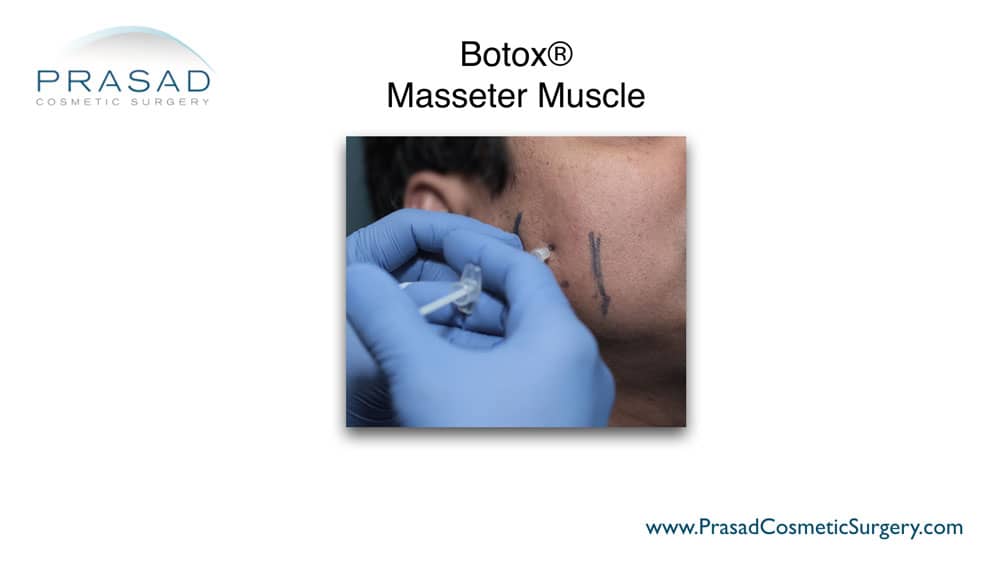
Botox for Chin Dimpling
Botulinum toxin can also be used to treat multiple small dimples on the chin, also known as orange peel skin, which is caused by the mentalis muscle. Bone loss, which is common with aging, also contributes to hyperactivity and increased visibility of the mentalis muscle action on the skin’s surface. This skin dimpling or cobblestone appearance is improved by reducing the activity of the mentalis muscle with botulinum toxin. This is frequently combined with the application of long-lasting hyaluronic acid filler to add projection to the chin, and to smooth the skin surface.
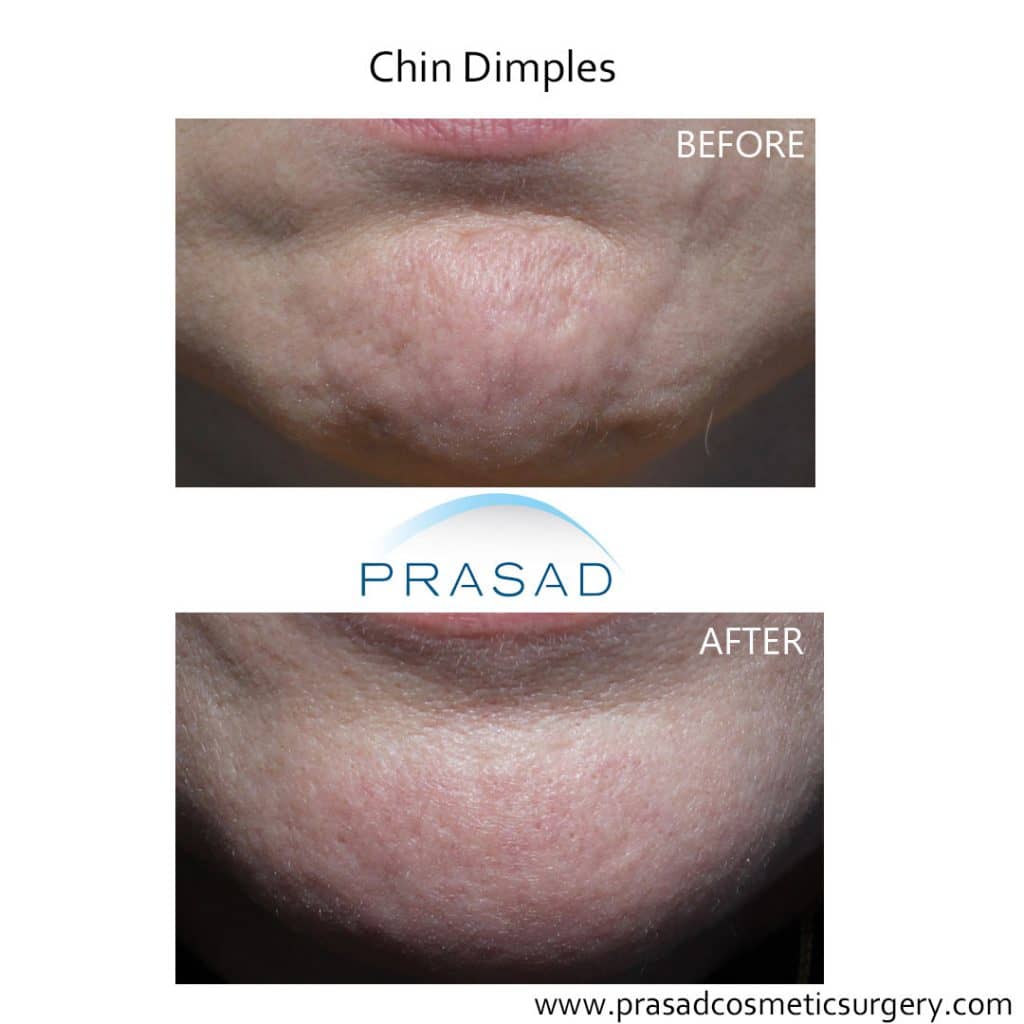
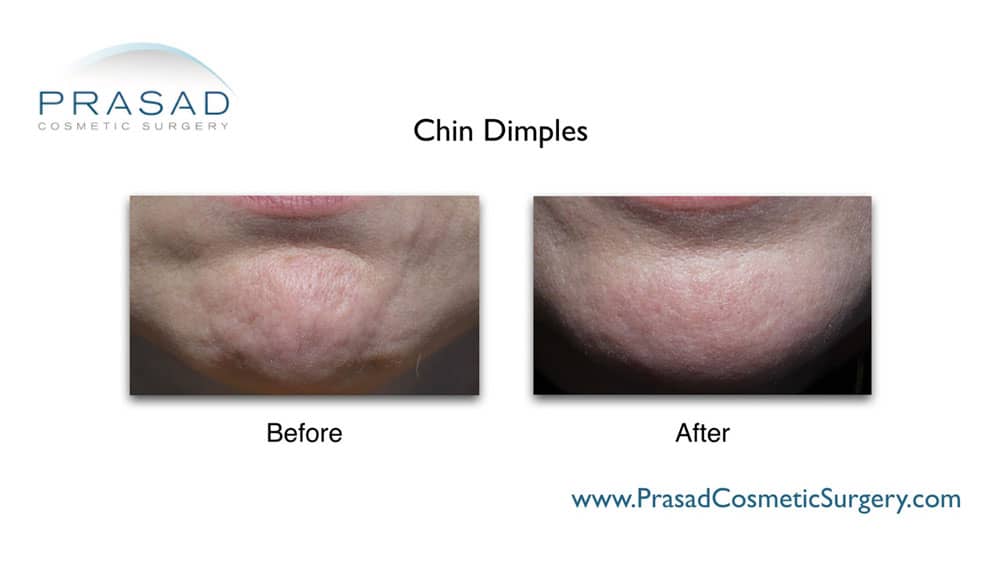
Conclusion
Botulinum toxin, particularly the brand Botox, has become a worldwide cultural symbol for the natural integration of medical aesthetic procedures into the daily life of anyone who wants to improve their appearance. A consequence of this ubiquity has led to a lot of aggressive retailing and misinformation, in particular inappropriately minimizing the risks of botulinum toxin injection. Consumers are being incentivized to self-diagnose and visit any given botulinum toxin dispenser. Some of the most vulnerable consumers fall into 2 categories:
1) People who don’t have the means or don’t want to spend the time and money necessary to see a higher-level specialist for more comprehensive guidance on the value of botulinum toxin for their particular concerns
2) People in their 20s who are being overly influenced into undergoing botulinum toxin and other procedures which they just don’t need
Both of these groups fall victim to transaction-driven lower-cost physicians and non-physicians who have financial incentives to sell as much as possible to anyone who walks into their shop. Unlike more established higher level physicians with practices and reputations, these people are less concerned about the long-term consequences of what they’re doing to the people they treat. I continuously see patients who come to me after spending more money, and losing time from work after being improperly treated by these medical retailers.
Botulinum toxin, like lasers and fillers, is one tool in the toolbox of potential solutions for your aesthetic concerns. The art is in knowing how to use botulinum toxin optimally, as well as when not to use it. I help a lot of successful people who come to my practice from around the world for their aesthetic needs. One aspect of being successful is that they understand how to leverage their time, and resources to maximize certainty in everything they do. Caveat emptor.
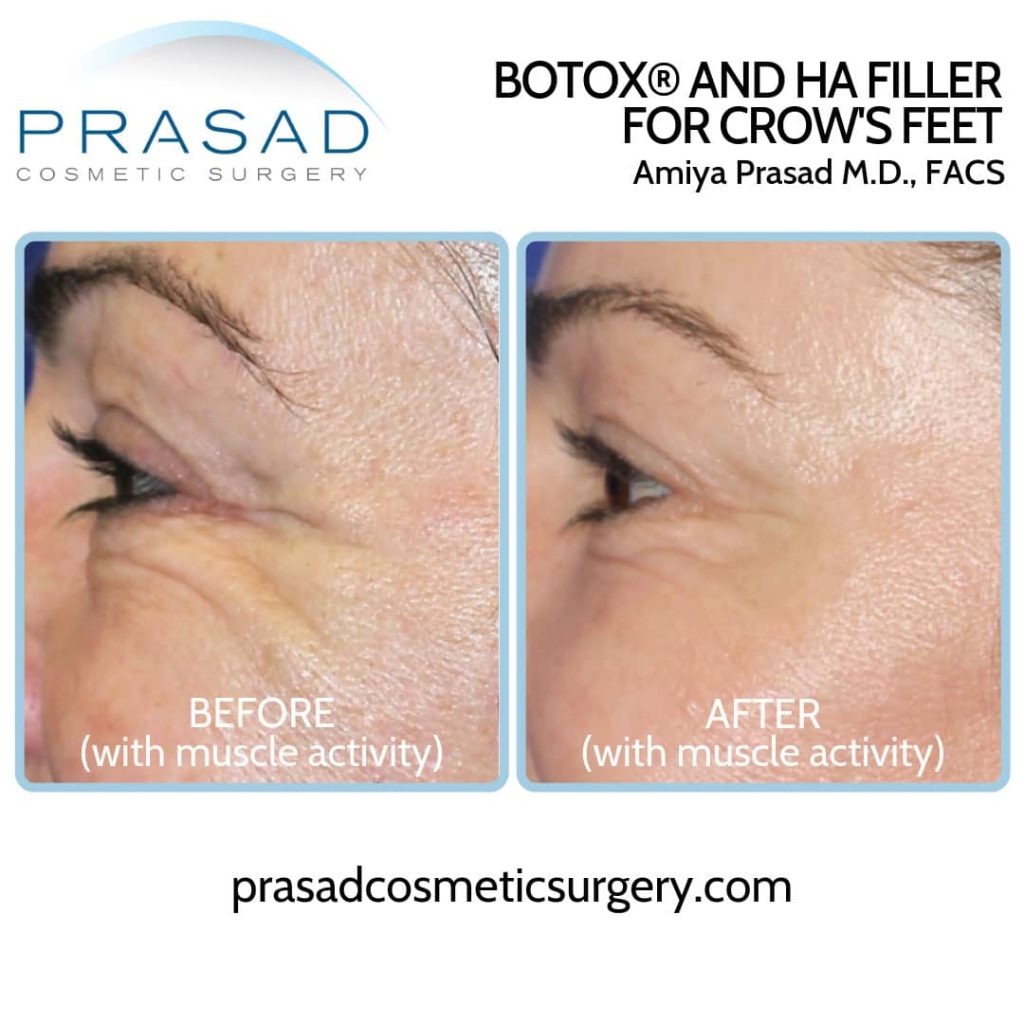
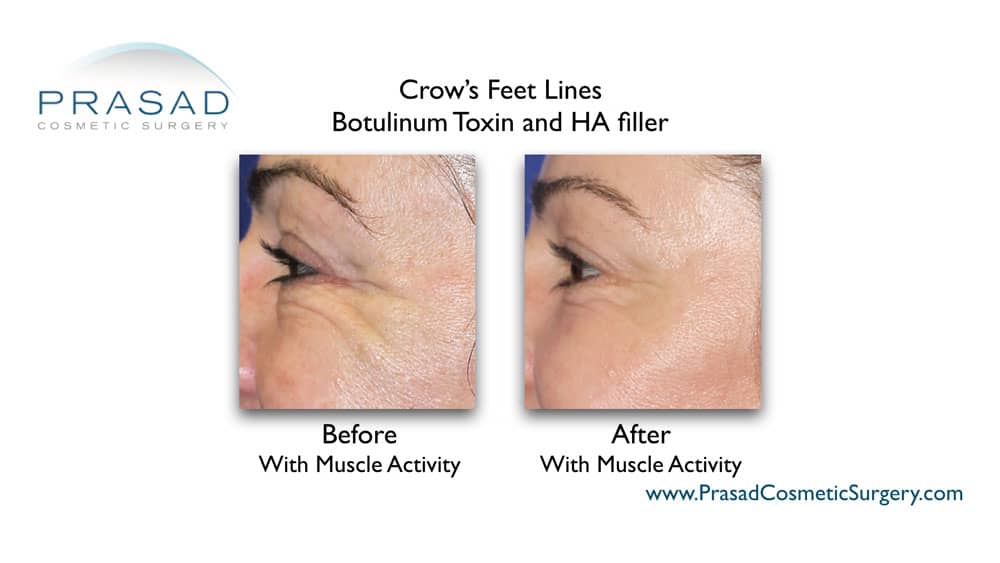
Botox and Fillers in NYC and Long Island, New York
Dr Amiya Prasad is a Board-certified cosmetic surgeon, and a Fellowship-trained oculofacial plastic surgeon. He’s been in practice in New York City and Long Island for over 25 years. To schedule a consultation, fill up the form below. You can also contact our offices at (212) 265-8877 for the Manhattan, New York City office; (516) 742-4636 for the Garden City, Long Island office; or (703) 356-1336 for the Vienna, Virginia office.
